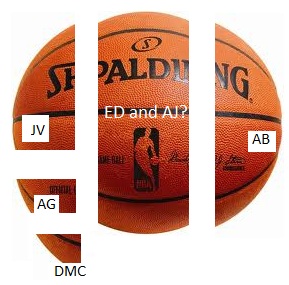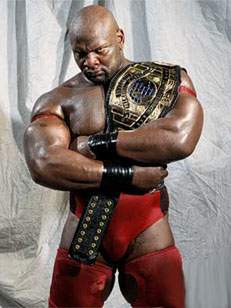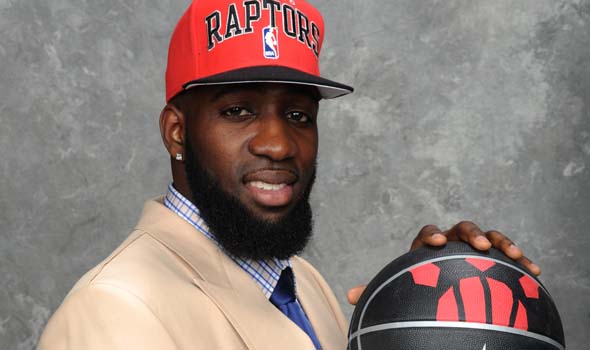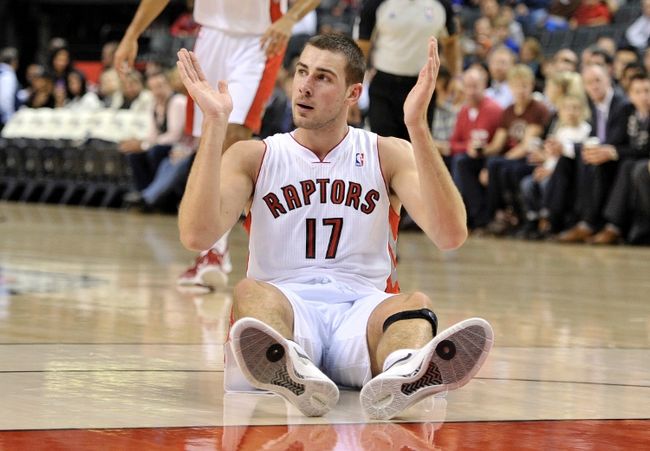There’s been a lot of talk this pre-season about how the minutes are going to be distributed for the Raptors’ front-court players this season.
While the team runs five-deep at the big positions, with additional options in rookie Quincy Acy and small-ball power forwards Linas Kleiza and Dominic McGuire, the minutes appear ready to be given to some combination of Andrea Bargnani, Jonas Valanciunas, Amir Johnson, Ed Davis and Aaron Gray.
Because of the introduction of The Lethaluanian and the return to health for Il Mago, we can’t simply assume the minutes will break down the same as they did last year.
2011-12 Minutes Breakdown
Andrea Bargnani – 33.3 MPG (31 games)
Amir Johnson – 24.3 MPG (64 games)
Ed Davis – 23.2 MPG (66 games)
Aaron Gray – 16.6 MPG (49 games)
Jamaal Magloire – 11.0 MPG (34 games)
Solomon Alabi – 8.7 MPG (14 games)
This actually leaves us 959 minutes, or about 14.5 MPG short, which can be accounted for by Linas Kleiza and James Johnson occasionally playing power forward in a smaller lineup.
Small Ball?
This year, I would not expect to see Kleiza at the four too often. While he can be an effective post scorer there, he struggles to defend and there are simply too many bigs to fight for minutes to play someone out of position there except in the most limited of matchups. If anything, I’d expect those “small four” minutes to go to McGuire as a matching mechanisms when teams like Oklahoma, Miami or New York use ball dominant wing players like Durant, LeBron or ‘Melo as “small ball fours.” (Yes, I keep putting that in quotations, since you may recall I’m not a proponent of the traditional five position definitions.)
Regardless, perhaps we can assume a total of 300 minutes going to McGuire and/or Kleiza in this kind of role. They won’t be spread evenly across games and the estimate might be too high or too low, but we’re using it and it leaves us with 7572 minutes left to distribute, assuming no overtime (a terrible assumption, of course, but minute in its impact here).
Remember the Nickname Il Mago?
With Bargnani back to full health, let’s pencil him in for 75 games at 35 MPG. In the past four seasons he’s averaged 31, 35, 36 and 33 minutes while playing in 82% of the team’s games, so I’m being a bit generous with the games played total but fair with the minutes load. It seems unreasonable to expect Andrea to receive less minutes than that on average, but if you want to knock down his games played to create minutes elsewhere, you can probably justify as few as 70 without suggesting a major injury. As it is, Bargnani, the most certain chunk of minutes distribution, gets 2625, leaving us with 4947 left to distribute.
The G.O.A.T.
I’d like to suggest Jonas will get all of the minutes, but that might not be fully realistic given that he’s a rookie, he will have occasional foul trouble, and nobody plays all of the minutes (but if anyone could, it would be Jonas). Valanciunas averaged a foul for every eight minutes of play during the preseason, which seems to be a pretty reasonable rate, although it may be on the lower end in terms of expected foul frequency.
I looked in Basketball Reference at rookie forwards and centers over the last four years to see if I could find a reasonable foul rate expectation, as well as a minutes expectation. Overall, rookie forwards and centers in the past four years have averaged a foul every 8.8 minutes. I also checked to see if block rate was related to foul rate, but there was only a correlation of about 44% so while, yes, shot blockers do tend to foul more, the relationship isn’t extremely pronounced. When I limited the sample to only players who spent at least some time at center I found the foul rate increased to one foul every 7.4 minutes, but shot blocking was even more weakly correlated with foul rate.
Perhaps here, shot blocking shouldn’t predict foul rate, since there are those shot blockers who accumulate the stat while trying to block everything (fouling in the process) but also those who rely on skill and timing to selectively block shots without being over-aggressive. So let’s give Jonas the benefit of the doubt and say that his preseason foul rate is indicative of what to expect in the regular season, and his high block potential shouldn’t impact that any further. A foul every eight minutes is a rate that would not keep him off the floor due to foul trouble a significant amount.
Now, since Jonas is relatively assured of minutes given his draft position, his reputation, and his strong preseason play, and we don’t think fouls will be too cumbersome too often, we have to establish a minutes per game expectation. In the four preseason games that followed his short debut, he averaged 26.5 MPG. Among all rookie centers who appeared in at least 50 games (my cut off for “rookie centers who played a fair amount,” or about 600 minutes) the last four years, the average minutes per game rate was 18.3 while the high was Marc Gasol’s 30.7. Only five centers managed more than 20 minutes a night (Gasol, Brook Lopez, Greg Monroe, Greg Oden and Gustavo Ayon).
Let’s put Jonas on the higher end of this group and give him 25 minutes a night, allowing for occasional foul trouble but occasional games where he is playing well and remains in longer than might be expected. Let’s also give him 75 games, assuming a few nicks and scrapes, since only three centers played a full 82 games in their rookie year the past four years. This would give Jonas 1875 minutes, leaving us with 3072.
50 Games of Gray
Gray will likely be limited to spot duty against bulkier centers this season, since he’s not as effective a player as his rotation maters but is the only big body available to coach Dwane Casey other than Jonas. Last year, the average center in the NBA was 6’10” and 251lbs, so let’s assume Gray will only play against those centers greater than 250lbs (for reference, Amir is allegedly 210lbs and Ed is 232, while Gray weighs about what I can bench…270). We’ll also only play him against centers worth gameplanning defense for, so Kendrick Perkins doesn’t register here (it would be silly to match up his all-D, no-O with the same type of player rather than trying to gain an advantage with a more skilled player).
The Eastern Conference teams Gray could be expected to get run against are: Philly (Bynum), Brooklyn (Lopez), Indy (Hibbert), Chicago (Boozer, maybe), Detroit (Drummond and Monroe…what a filthy duo that could be, yikes!), Charlotte (Mullens, maybe), Atlanta (Horford), Washington (Nene, Okafor). There are likely a few others but nobody dangerous enough that you’d find yourself saying “oh shoot, we better play Gray to body him up or he’ll torch us.”
Let’s give Gray 50 games of run, 20 of which he’ll get just 4 minutes in and 30 of which he’ll play 14. This gives him 500 minutes which is less than last year but more than he had received since 2008-09. I know the Republic has some staunch Gray supporters, but I don’t see his value over our other options here, except as defined above.
Ahmed Johnson
The other day I “predicted” Ed Davis and Amir Johnson would merge into one mega-force known as Amed Davison, but Ahmed Johnson is more appropriate because a) he was a WWF wrestler known to be extremely prone to hurting his fellow wrestlers, which is funny, and b) Amir is likely the “bigger” half of the duo in terms of role and should therefore also have a bigger share of the name.
Given Andrea’s 35 MPG, Jonas’ 25 MPG and the spot duty for McGuire/Kleiza and Gray, we’re left with just 2572 minutes for Amir and Ed. We can also add in about 100 minutes for overtime (last year NBA teams played 100.8% of the expected minutes total, a pace of 160 minutes extra for players; we’ll give Amir and Ed 100 of those to be kind. So we’ve got 2672 minutes to divide between these two young men who combined for 3087 minutes last year. Obviously, someone’s not going to be happy.
Last year, Amir and Ed had fairly similar statistics. In fact, let’s see if you can guess who is who.
Player A: 23.2 MPG, 51.3% FG, 67% FT, 6.3 PPG, 6.6RPG, 0.6 SPG, 1.0 BPG, 1.0 TOPG, 2.4 FPG, 54.4% TS, 16.7% RebRate, 108 ORtg, 101 DRtg, 3.9 Win Shares
Player B: 24.3 MPG, 57.6% FG, 69% FT, 7.1PPG, 6.4RPG, 0.5SPG, 1.1BPG, 1.5 TOPG, 3.3 FPG, 60% TS, 15.4% RebRate, 109 ORtg, 102 DRtg, 4.0 Win Shares
Having watched the games, and with FG% and foul rate tipping you off, you probably guessed that A is Ed Davis and B is Amir Johnson. But send those stats to a non-Raptor fan friend and see if they can figure it out, or ask who they’d rather have playing the bulk of the minutes? The answer would probably come back relatively split, or with a “who the hell cares, they appear to be equal.”
Now, if the team decided to put their eggs in one player’s basket, and boy is that an awkward sentence, based on our scenarios here said player would receive about 33 MPG. Either player, given those minutes, would probably put up a near double-double with about a block and a half a night, very solid numbers for a third big man in a rotation. Alas, they’ll likely both get minutes and neither will have numbers in that range.
If the preseason is an indication, Johnson appears likely to get more run (they’ve both played 19-20 minutes a game but Johnson has been the first man up). One key reason is that he provides a nice complement to Andrea Bargnani, protecting the paint on defense and allowing Bargnani to not worry about help defense and weak-side blocks, while also playing closer to the rim and grabbing boards on offense, allowing Bargnani to roam. However, Davis appears to be a strong complement as well given his slightly stronger rebounding rates and his equal shot-blocking ability, but Davis seems, to my eye, more limited in his ability to play center despite having a weight edge over Johnson.
It’s difficult to see how this will shake out. Amir is older and has been in the league four years longer, so he ostensibly has less upside to tap into. He also makes more money, which could be a vote in favor of playing him more, but Davis also has just this year and next for the team to make a determinate decision about his future. They are similar players with similar upsides, leaving coach Casey with tough rotation decisions game in and game out.
What would be nice is to do away with the “small ball four” minutes and Aaron Gray’s minutes, which would give them 3472 minutes (a combined 42 minutes a night) to play with. This would be my ideal scenario, but it’s not realistic given the usefulness of Gray and McGuire in certain situations. As it is, and this sure sounds like a cop out, I’d “play the hot hand” so to speak and let the battle for minutes be a season-long motivational tool for both of them. I’d venture Amir will get the greater share given the minutes split of Bargnani/Jonas and his ability to play some center, but this seems like a situation that could be very fluid game to game.
What does the Republic think? Is it time to ditch one and give the minutes to the other? Am I overestimating Jonas’ playing time? Do we send Gray out to sea on a raft, or let him play 20 minutes because it’s hilarious to make jokes about his foot speed and vertical jump?







